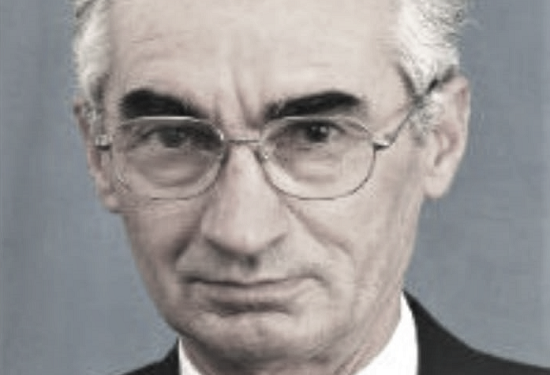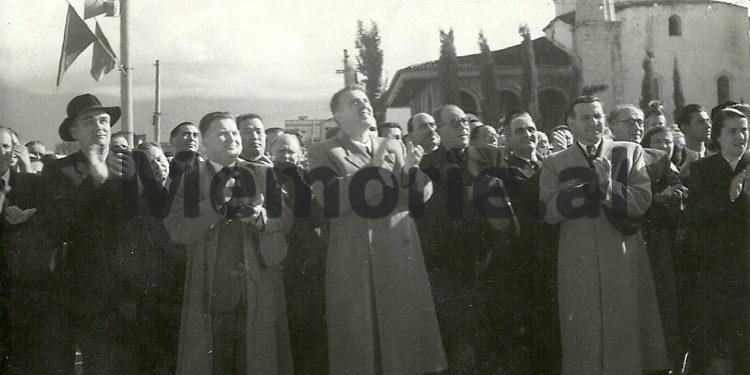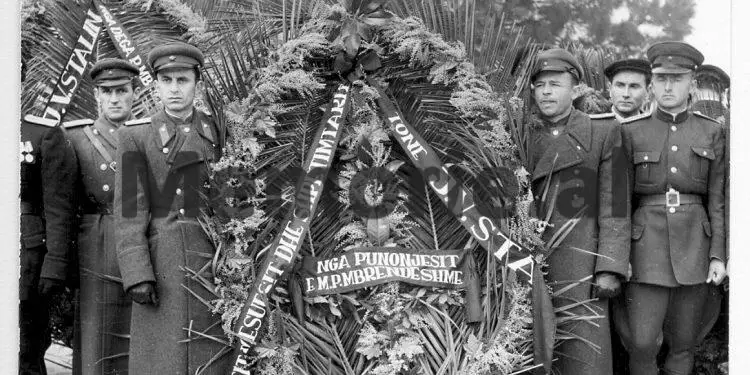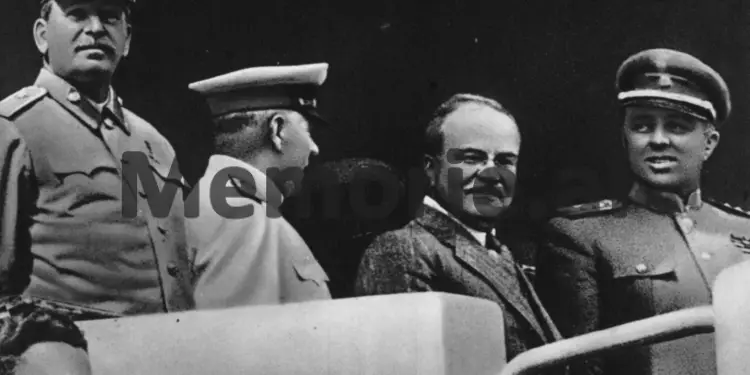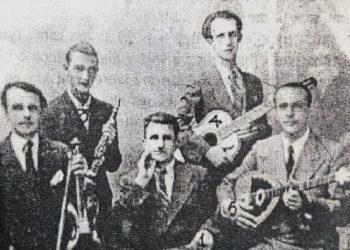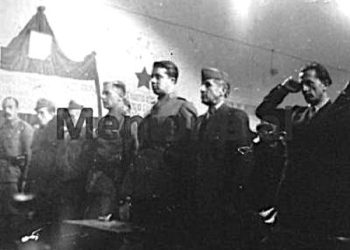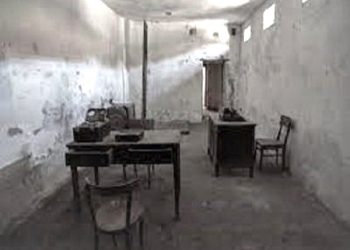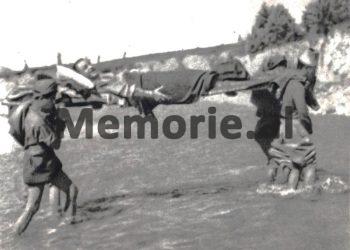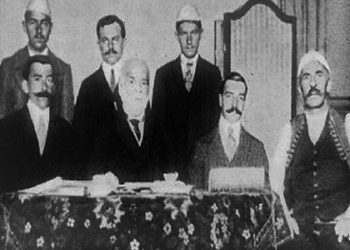By Eugjen Merlika
Stalin – Legend and reality –
Memorie.al / March 6, 1953, were a cloudy day in the city of Korça. The snow had covered, with its whiteness, not only Morava, but also the city, which that day was silent and in mourning. In front of the bust of Stalin, in the square in front of the “Morava” cinema, school students and other citizens stood on their knees, silently, listening to someone who, through the loudspeaker, expressed the deep pain of the party and all Albanians, for the loss the greatest that Albania had suffered ”. In Moscow, the center of communism, the day before, the heart of Josif Visarionovich Stalin had stopped beating.
How much water has flowed under the bridges since that day, how much the world and Albania have changed, how much our concepts of times and events have changed. What about Stalin, a student at the time? It was a legend, the embodiment of good fighting and defeating evil everywhere in the world, “the savior of mankind from the Nazi beast”, “the teacher and leader of the world proletariat”, “the great protector of small peoples”, “and the best friend of the Albanian people”. This was the framework in which not only us, but a third of the world, put the Georgian ‘mustache’. It was the halo that covered the true face of one of the cruelest bloodsuckers known to human history.
Today, after half a century, with open archives, with communism transformed into a relic that serves to avert the possible chaos of China, to keep alive the dynasties of the Kim and Castro, and to stir up the memories and merchandise of any the veteran apparatchik, the judgment on the complex figure of Stalin, is stripped of the fog of propaganda, instrumentalization of lies, characteristic of communist historiography, and presented to us in the light of truth.
The personality, who would seal with his work, for better or worse, the twentieth century, had had a difficult childhood, surprisingly similar to that of another, quite important figure, Adolf Hitler. An alcoholic and domestic violent father, a mother madly attached to her only son, after losing two others, a seminary environment with its rules and severity, formed in the young man a resentful man, closed in on him, disbelieving, harsh, aggressive and lonely. That man never managed to radiate love in the family; his mother dies and he does not throw a fist at her, and his wife kills herself out of desperation, her daughter lives in seclusion and eagerly awaits the opportunity to leave her place.
He was arrested and imprisoned by the Tsarist police and allegedly cooperated with him. He escapes from prison, enters clandestineness and joins the Bolshevik party, where he quickly climbs the career ladder to become its organizational secretary. The party headquarters, headed by Lenin, is located in Switzerland, while Josif Jugashvili is organizing it in the provinces of Russia, which is at war with Western democracies, against the Central European Tripartite Alliance.
The slogans of peace and Russia’s withdrawal from the war are the banner of Bolshevik propaganda in the ranks of the army and the people. It was the strategy of the German General Staff, which aimed to close the Eastern front, to focus on that of the West and to win the war. This strategy was served by the “armored train”, which from Switzerland, brought to Russia Lenin, Trotsky, Zinoviev and other leaders of the Bolshevik party, a train specially provided by the German Foreign Ministry, along with a good amount of money, known as the “Berlin gold”.
James Joyce then called Lenin’s return to Russia “a kind of Trojan horse.” The coup of November 7, 1917, known in history as the “Great Socialist Revolution of October”, was the realization in practice of the Bolshevik aims to seize power and to reward the honor of Kaiser Germany with the Treaty of Brest. Litovsky, who withdrew Russia from the war.
The regime of terror began immediately, under the label of the “dictatorship of the proletariat”, which spared no one, from the Tsarist family treacherously massacred, to the millions of free peasants and Cossacks who had been the backbone of ancient Russia, to the so-called bourgeois intellectuals and, up to the highest cadres of the Party and the State. Soviet power was born as a huge plant of terror, before which the guillotines of France’s Jacobin revolution were like children’s toys and in which, with the help of Joseph Visarionovich Stalin, it was of paramount importance.
How many millions of victims are the human carnage in the “homeland of socialism”? According to historian Roi Medvedev, “no tyrant in history has massacred such a large number of compatriots.” “At least fifteen million,” says Nobel Peace Prize laureate dissident scientist Andrei Zaharov. But Solzhenitsyn estimated all the victims of the Soviet “civil war” at sixty million. The exact figures are still unknown. Maybe they are kept secret and maybe they do not exist at all. Their history is terrible, it knows no boundaries, it knows no criteria. “The dictatorship of the proletariat,” Lenin said, “is a power without restrictions, without laws, without rules, which relies directly on coercion.”
Coercion was the main law of the “New World” to be built on one-sixth of the globe. The Gulag system from Vorkuta to Kolima was the most accurate reflection of that world. In them the lifespan did not exceed five weeks and the obligatory daily rate was eight hundred puddles of mineral, while in Tsarist Russia, there had been a total of three puddles!!! Every morning the lists of the dead were read, in which there were also children from the age of 12 years. A decree of April 7, 1935, authorized the execution of capital from the age of 12 years. On the right bank of the Dnieper, during the summer of 1933, about three thousand children aged seven to twelve, the sons of kulaks, were gathered in one place and left to starve to death, while the barns were full of grain.
All these horrific phenomena took place, under the “bright” leadership of the classic Marxism, Stalin, and in later history, were identified with his name. But does such identification fully correspond to the truth? Was Stalin really the only one who devised this strategy of extermination in the name of the “New World” and the “New Man”, and who carried it out with the precision of a race legislator?
The attempt of the “progressive” historiography of the West, to simplify in the term “Stalinism” the unprecedented violence of the communist regime, aims to “prove” that the excesses, mistakes (few people mention the word crimes), of the communist system, are not in DNA in his, but are displays of particular persons, who have been in leadership.
The truth is another. The appearance of Stalin and his work as a dogmatic distortion of Leninism, fashionable in the 1950s and 1960s in Khrushchev’s Soviet Union and in the communist parties of the West, is an alibi to cover up the true nature of the system as an ideology and as a realization. .
The Lenin-Stalin dualism is a creature invented by the proponents of communist ideology to put crutches on theory. Stalin continued Lenin’s work in all the forms imagined and designed by him. The Gulag system was sponsored by Lenin, who ordered “the cleansing of Russian soil of all harmful insects.” Putting the entire party and state apparatus under the strict and all-powerful control of Dzerzhinsky’s EKEKA, was a principle applied by Lenin. Forced collectivization of agriculture and mass displacements of national minorities were not just Stalin’s ideas. “Revolutionary violence” was legislated by Lenin, Trotsky, Zinoviev, Kamenev, Bukharin, etc., right after the roar of the “Aurora” cannons.
While in class societies the guiding principle is: “Who does not work, does not eat”, in communist society is: “Who does not obey does not eat”, Trotsky would later write in his work “The Betrayed Revolution”. He would attribute the title of his work to Stalin’s “mediocrity,” but he forgot that he himself was one of the inspirers of “revolutionary” violence when, as the People’s Commissar for War, he cynically expressed himself: “As far as we are concerned, we have never had anything to do with the Cantian-priestly or Quaker-vegetarian types on the sanctity of human life.”
The monstrous crimes of the Soviet power and the communist regimes, in general, cannot be attributed only to Joseph Stalin, no matter how the champion of crime. They originated from Marx’s ideas, which divided people into exploiters and exploiters, into constant and incompatible war with each other, who called religious beliefs with their moral principles “opium for the people”, stripping the being naked. human from those eternal values that form the basis of human society. Stalin widened the gap that Marx and Lenin had previously opened, a bloodbath that had long remained unknown to the world after being covered by demagoguery and lies about the “workers’ paradise” and the economic development of a country with a potential extraordinary.
Here is how Solzhenitsyn, one of the best connoisseurs of Soviet reality, explains the ocean of communist crime: “Macbeth is a criminal and kills seven victims. To kill many more, first six million, then sixty, a multiplier is needed. “This multiplier is ideology.” Ideology is that which justifies everything, the oppression, the violence, the terror of one part of the people over the other or of a caste of people over a people, in the name of class interests, of building a superior society, where utopia strives to replace reality. Ideology creates monstrous people, who blindly exercise violence, in all its forms, without any remorse.
Much has been said and written about Stalin’s merits in his victory over Nazi-Fascism. I think two things need to be kept in mind: first, that he first made a pact with Hitler, the negative consequences of which were suffered by the Poles, Lithuanians, Latvians and Estonians, who lost their independence; secondly, it is not very clear where the merits of the “Winter General”, the vast Russian space and the American aviation end, and where those of the generalization and the Red Army begin, which, in the first months of the war, surrendered as herds in the hands of the Germans. But in the return of Russia from an underdeveloped country, to over the second world power, regardless of the means and methods, I think Stalin deserves an assessment which, I am convinced, history will not deny.
The story of Stalin is also the story of the Communist Party after, despite Marx’s thesis on the role of the masses in determining historical events, after Lenin’s death, he remained the undisputed ‘Zeus’ of Moscow’s ‘Olympus’ and world communism. It is a story of traps, infidelities, annihilation of opponents and comrades, a human jungle, before which the animal jungle looks like a paradise of angels. The Soviet Union sold arms to the Spanish Communist Republic at stratospheric prices, transferring all of Madrid’s gold to Moscow. This was one of the manifestations of the so-called “proletarian internationalism”.
“The revolution eats its sons.” This seems to be the supreme truth of all revolutions, but the brightest example in this regard remains the Moscow trials of 1935-1938, orchestrated and led by Stalin himself. It seems that this law did not spare him either, after his death, it is thought to have been caused by a poisoning, it is said by his close friend, the Minister of Interior, Beria. There is no reliable evidence for this, but it is a fact that he remained without medical help for two days and this was not a coincidence. The revolted son openly accused “the bastards who had killed their father”. A month later he ended up in jail, sentenced to ten years in prison. The conspiracy against Stalin was allegedly orchestrated because he planned a campaign of arrests in the leadership, following the model of the Moscow trials, and finally, American scholars defending the thesis of a project for an armed conflict with the US, that would lead to a world nuclear catastrophe.
This was the truth that millions of the communist universe could not have known who, in those days of March half a hundred years ago, shed tears for the “legendary leader”. Legend and truth seldom coincide, they are far from each other, in many cases they even exclude each other. Everything we learned in schools was legend, what was written in the archives and in the memory of the participants of the events, formed the truth.
We Albanians have the “merit” that we have maintained a privileged relationship only with the legend. We have been more diligent than others in applying Stalin’s teachings and experience, turning the country into a large prison, where hundreds of kilometers of barbed wire from forced labor camps, prisons and internment centers stand out which state crime figures, per capita, can be equated with his own. We tried to apply ‘ad literam’ its basic principles in the economic field, forcibly collectivizing three quarters of the population living in the village, to lead them to extreme poverty.
We nurtured the useless illusions of creating heavy industry that a small country like Albania did not need, running out of funds that could very well serve if used elsewhere. We loved and respected the “Father of Peoples” more than others, we kept his memory and name longer than his country, we kept his statues and busts, until the fall of the Berlin Wall, and we even passed a law on their protection. We called him our best friend, even though he had offered our country to Tito’s Yugoslav Federation in time. All this absurd and foolish policy, gave us the label of “Europe’s last Stalinist country”, and our leaders had this label, they had it in honor and kept it as a medal.
“Oh shame where you have the redness …”! Once exuded the Prince of Denmark. How many times should we have emptied this Hamletian heart of our “bright” Stalinist leaders, of the incurable wounds they inflicted on this country, of the cruelty and incompetence with which they ruled it, of the anachronism to which they turned our lives? But they did not blush even when, like Don Quixote with the sword, they defended Stalin’s tyranny even today when, through books, articles and interviews, they evoke their monstrous time. They continue to mock the victims of their crimes because, socialist and Christian Europe, in the name of a controversial morality, told Nuremberg to stop communism.
This is the reason why those gentlemen remained unpunished and not what some analysts say: “the accusations that were never substantiated for” genocide and crimes against humanity “, against the former top officials of the communist regime …”! Proof of those accusations are the indisputable figures of political persecution in communist Albania, is the answer for them.
We owe it to their shamelessness to confront the heroism of those young men of Shkodra and Tirana who, at a certain moment, decided to avenge the Nation by overthrowing the statues of the Georgian communist dictator and his disciple. Albanians, paying with the physical mutilation that the “Sons of Stalin” inflicted on their youth troops. It would have been a nice thing if someone in the Presidency of the State had remembered to give a medal to those young men, whose action gives much more honor to the history of this country, than the whole activity of ministers, officials or the disciples of the Albanian Stalinists. Memorie.al
March 2003




